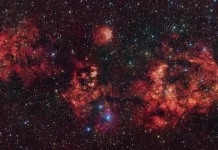In an endeavour to combat anti-microbial resistance (AMR), pioneering research networks have been granted £3 million to plan novel strategies
Funding has been allocated to establish cross-disciplinary research networks to spearhead the battle against anti-microbial resistance.
These networks will adopt a comprehensive approach, encompassing various fields, including culture, economics, behaviour, biomedical and physical sciences, design, engineering, and environmental sciences.
UKRI’s initiative to tackle anti-microbial resistance
This initiative is integral to the UK Research and Innovation’s (UKRI) “Tackling Infections” strategic theme.
It unites researchers, policymakers, and industry leaders from diverse sectors, including social sciences, biotechnology, agriculture, technology, and environmental engineering.
Anti-microbial resistance and it’s challenges
Dr Colin Miles, Head of Strategy for Advanced Manufacturing and Clean Growth, emphasises that confronting the creeping pandemic of anti-microbial resistance is an intricate challenge with dire long-term repercussions.
By 2050, an estimated ten million lives annually could be lost to this crisis. Developing more antibiotics alone will not suffice; a holistic, multidisciplinary approach is imperative.
Unveiling £10m in funding for innovative approaches in science
UKRI has committed to offering up to £10 million in new funding, with this initial £3 million stage aimed at enabling UK researchers to set up transdisciplinary networks.
These networks will develop novel methods, technologies, and standardised data collection frameworks, investigate climate change’s influence on AMR, and create evidence-based interventions beyond pharmaceutical solutions.
Addressing AMR in agriculture and beyond
The initiative will also examine the impact of AMR in crop production and animal husbandry while considering its implications on food security. The ultimate goal is to transcend traditional approaches and solve the AMR threat comprehensively.
Incorporating social, cultural, and economic strategies alongside engineering and technological innovations, this initiative is a beacon of hope in the global fight against AMR, aligning with UKRI’s commitment to better manage future infectious disease threats under the “Tackling Infections” strategic theme.


![Discovering the dark universe and a stellar nursery: Euclid searches through Orion constellation Image description: The focus of the image is a portion of LDN 1641, an interstellar nebula in the constellation of Orion. In this view, a deep-black background is sprinkled with a multitude of dots (stars) of different sizes and shades of bright white. Across the sea of stars, a web of fuzzy tendrils and ribbons in varying shades of orange and brown rises from the bottom of the image towards the top-right like thin coils of smoke.] CREDIT ESA/Euclid/Euclid Consortium/NASA, image processing by M. Schirmer (MPIA, Heidelberg)](https://www.openaccessgovernment.org/wp-content/uploads/2025/11/Euclid_peers_through_a_dark_cloud_s_dusty_veil-218x150.jpg)








